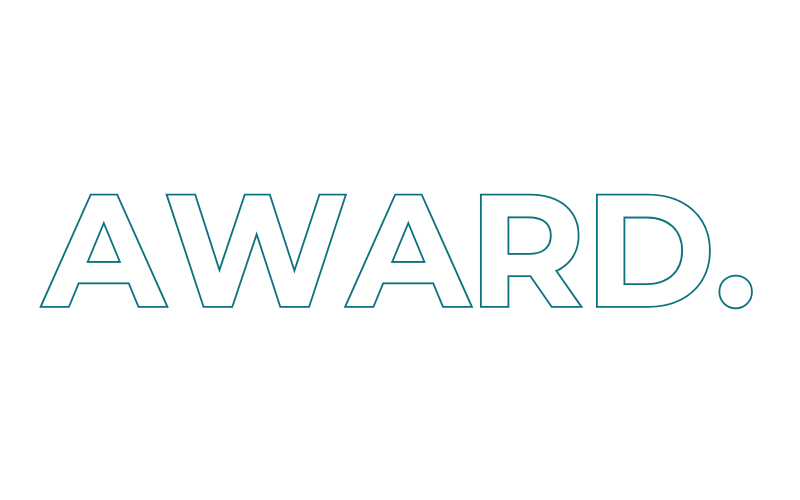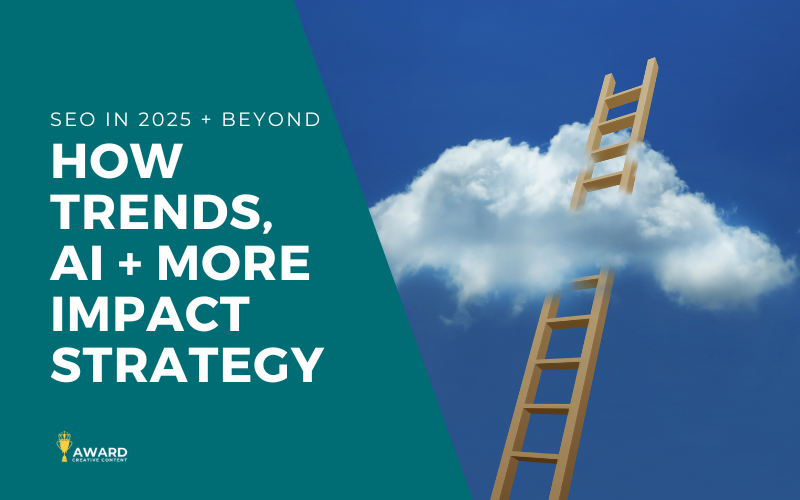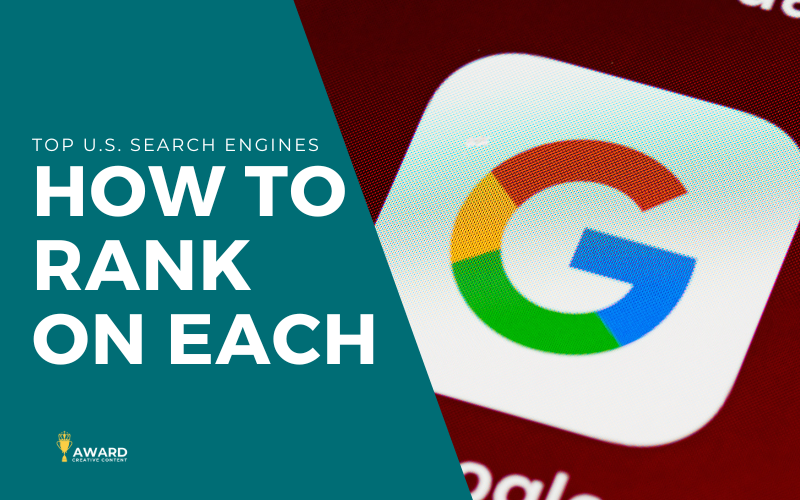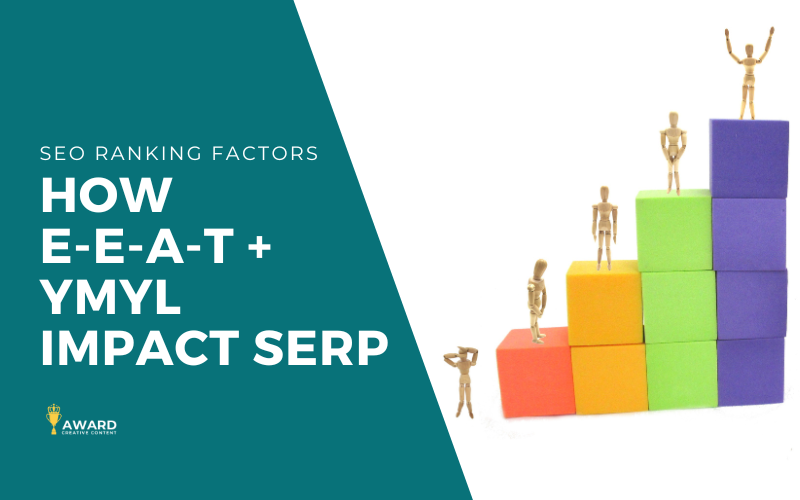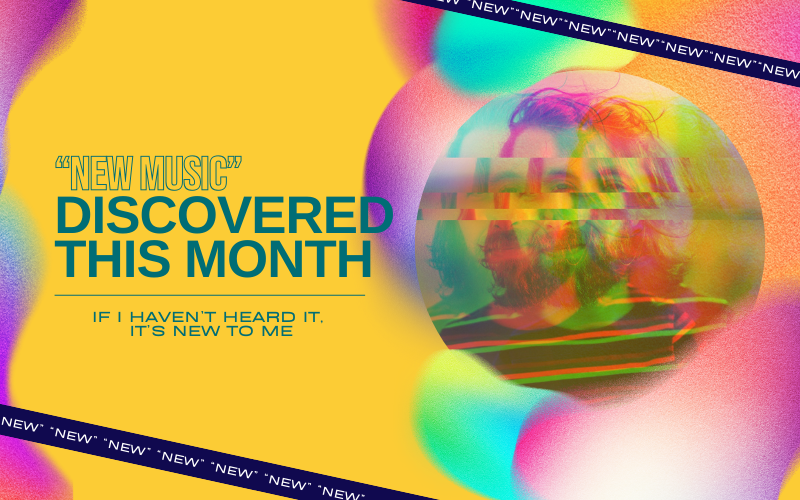The state of search in 2025 has many wondering if the latest trends and innovations will continue to evolve the SEO optimization space at a rapid pace.
And the answer is, resoundingly, yes. But, which ones will actually create a lasting impact–the kind that brands need to consider when planning out their strategies?
The seemingly non-stop evolution in the search space is largely driven by trends pushing SEO into the future. Recent examples of components that seem to have staying power include:
- New and emerging platforms
- Increased automation
- Sustainability concerns
- AI-driven SEO
- Voice search (VSEO)
- Enhanced UX expectations
- E-E-A-T guidelines
- Semantic search
- Zero-click results
So, what’s the future of SEO really look like? The truth is, we have an idea but with lots of change always on the horizon, one can never be truly certain. Using SEO today as a barometer, the landscape will only likely become more dynamic–even if some think SEO is about to die (not us, though).
So, how can your brand’s SEO stay on point in an almost always evolving sector?
To ensure your SEO strategy remains effective, it’s important to adopt an agile, multi-faceted approach without bending or breaking those plans as the latest SEO trends and innovations come about. Essentially, it’s about staying flexible without forgetting the long-term plan.
But isn’t that the gameplan since, well, forever? Essentially, yes! And here’s how it’s done today:
Embrace OmniSEO
A few years ago, SEO was synonymous with Google. And while that’s still true, search goes far beyond one giant search engine.
OmniSEO is a mindset that recognizes Google’s impact on SEO while realizing it isn’t the only show in town. Essentially, while Google SEO is still important, numerous other search engines, ecomms platforms, multimodal search, and other channels should all be recognized for their potential ROI.
Instead of relying solely on traditional search engines, adopt an OmniSEO approach—optimizing across the search channels that best benefit your brand.
But Isn’t Google Enough?
Perhaps! But think about it from another perspective:
Your audience isn’t searching exclusively on Google. They’re also using AI in SEO now. That means searching using platforms like ChatGPT and various assistants. They’re also searching social media, with age dictating the platform they’re likely using. Marketplaces like Amazon and Walmart can be equally if not more important to B2C brand growth.
So, what does that mean?: It means you need to optimize where your audience is. Otherwise, you could be missing out on key impressions, clicks and conversions–even if your Google SEO is top notch. It may be extra work, but consider what optimizing the right channels can do for your business growth.
Furthermore, an OmniSEO approach ensures stability, even if one platform experiences algorithmic volatility. Essentially, even if you tanked on Google, you may still thrive on Amazon, Meta, Shopify and other key avenues.
Find out more about AWARD’s search engine optimization and marketing services!
Prioritize Your Community

SEO comes and goes, but a solid, well-cared for community will last. As long as the brand stays true to being a viable destination for its members, it will largely transcend any SEO setbacks they may encounter.
Developing a trusted community can not only drive a brand’s SEO through return visits and word of mouth marketing. It can also prepare the brand for any setbacks caused by SEO trends and SERP changes over time.
How’s it done?: It’s done by creating the most value for your community. That can be a product, a source of inspiration, a hub for community to form, etc. If there’s value already, double down and foster that community. If it’s not been found yet, then you’ll have to put in some extra effort to develop that. It’s no easy task or short-term fix, but it’s key to creating a lasting impression in the minds of the public.
Think of it this way: As long as the community is still getting that high value from visiting your properties, the traffic will keep coming. You may lose some casuals due to SEO dips, but you won’t lose that fanbase unless you’re outright deplatformed–which also isn’t a certified deathnail for your brand either.
Have Your Community Help Your Brand
After putting in the work and providing value to your community, then you can make the occasional ask that helps boost your brand’s SEO. Some of the most effective ways to leverage your community to help strengthen your brand’s digital trustworthiness include:
- Customer reviews (Google business page, Yelp, Reddit, industry-specific sites)
- Social media shout outs
- Refer a friend (with referral bonuses to sweeten the benefit for the community member)
Building strong brand authority not only helps SEO but also creates loyalty, repeated user visits, and new visitors—all key signals to Google’s algorithm, and likely many other search-focused platforms.
AI, SEO Automation and Human Know-How
Some may still consider it a trend, but AI appears to be anything but–justifying its integration into marketing efforts, no doubt. SEO trends and professional feedback shows that AI tools significantly enhance efficiency. That includes 83% of respondents who reported improved SEO performance after their 200+ person team implemented AI into their strategy.
Want to go further? Investing in advanced AI-powered platforms to predict ranking fluctuations and identify trends could be beneficial–if the tool provides accurate data (which sometimes isn’t always the case with SEO reporting).
That said, humans remain essential to the process by ensuring content retains a human perspective and aligns with the brand voice. Further, while AI is helpful, humans are needed to validate insights, as LLMs and other platforms can be wrong on occasion.
Quality Content Beats Algorithm Chasing (Usually)
With so much AI-generated content flooding the web, it’s easy to assume automation is the best path. But quality is what ultimately makes content stand out, even if that doesn’t always seem to be the case.
Today, 90% of content created online in 2025 could be AI generated. Is that a sign that AI is the way to go? Should brands push back and create their own content? That’s up to you, your data, and the quality of your content creators–whether they’re using AI or not.
Even if you stay on the human generated side of things, what content should you create? Should you chase the results for your ideal keywords? Does every piece of content need to be a listicle of 40+ items, or a 2000+ word deep dive that only a robot or someone with tons of time on their hands would read?
In the past, that’s been the case. But thankfully, as recent developments appear to indicate, Google (and hopefully other platforms) are adjusting to prioritize content that’s actually A. informative and B. engaging enough that people actually spend time reading/viewing it.
What is Quality Content?
When creating content or a page, don’t ask what the SEO trends are saying to do. Instead, ask if this page truly deserves to rank.
Does it have the quality information and site experience to make people want to stay, learn, and engage? If not, consider holding off on hitting that publish button–whether your work is human, AI or hybrid generated.
In a time where 57% of B2B sellers are overlooking marketing content, one should be asking what’s the intent before ever creating anything. If the answer is any form of “we’re just making it to keep up” or “it’ll rank high,” then it’s time to head back to the drawing board–that is, unless you’re okay with being overlooked as a dime-a-dozen piece of digital junk content.
When to Adapt and When to Stay the Course
While it’s tempting to adjust tactics with each Google update or SERP report, the sustainable approach is to stay the course unless a clear sign says to change it up.
It’s understandable that a brand would want to adjust plans if it gets a bad SERP report. But, these dips may be momentary, and those knee-jerk reactions could have long-term effects. Avoiding short-term, black-hat tactics–such as spamming AI-generated content, keyword stuffing, or misleading users–are key to remaining high in the ranks and unpenalized on most platforms. While those not-so-reputable tactics may provide a quick bump, these pages are often flagged soon enough, sending them back down the rankings.
But, what if it’s more than one report? What if there’s a market shift underway? Then, that’s entirely different. If we’re looking at long-term trends or changes in rules, then an immediate change in plans could be called for. But, if a short-term dip or a quick-passing trend is having its moment in the sun, then it may be wise to wait and see how things develop before deciding on any changes. Unless you’ve got the content and timing to capitalize on these short-term indicators, your brand likely won’t see much ROI from adding them to the plan or adjusting outright.
So, Don’t Care About SEO Trends, or Data? Just Make Content Often?
Not exactly. Keeping up with the trends is crucial. Otherwise, you could find yourself getting left behind. Instead, the focus should be on learning but not reacting to every change as they develop.
Whether it be Google SEO or optimization for other platforms, the goal is to stay agile. AI, Google and other search-based platforms continually roll out new features, such as AI-generated search experiences (SGE). Stay proactive by learning about them and deciding if they should be implemented into your brand. Think about the long- and short-term potential benefits.
Not sure what might be worth implementing? Consider your brand and how it could benefit your growth and/or operations. Much of these factors can be determined with the following efforts:
- Regularly review SERP changes and adjust your content structure accordingly.
- Leverage AI-driven SEO tools to monitor performance shifts, predict traffic trends, and adapt swiftly.
- Using analytics tools that leverage AI to recognize patterns early, allowing quicker strategic pivots.
Tracking and Planning Accordingly
It’s always wise to leverage analytics and data-driven insights when considering strategy. Monitor search query trends, A/B test results, user engagement metrics, and on-site behavior to see how the market and your community is behaving.
This is where AI is particularly useful. Machine-learning-driven platforms can highlight potential ranking drops or opportunities before they happen, allowing brands to adjust if the shift is deemed critical. Just avoid making quick decisions and gut assumptions, or risk becoming turned around and rudderless when a clear plan is needed.
Continuous Learning, Experimentation, and Staying the Course
SEO trends and innovations evolve constantly. Adopting a continuous learning culture is key to success. Experimenting with emerging trends, tools, and tactics is key–but shouldn’t negate ongoing plans unless the data clearly shows a pivot is needed.
Brands that embrace curiosity and adaptability will consistently outperform those adhering rigidly to outdated methods. That said, adapt only when needed or the data indicates it. Otherwise, keep the tweaking to a minimum until the results of the previous effort fully materialize. This approach will give your past work time to breathe, show what it sowed and then give your brand time to asses what new lessons may be best integrated into the next campaign/effort.
SEO Optimization in the Modern Era
People might not like saying that, but yes, in many ways, the SEO gameplan remains much the same as it had in previous years. Instead of binning what’s worked before, it’s time to consider that latest developments and decide what should be implemented into future plans.
The reality is that much of SEO is the same in 2025–just with an updated playbook. It’s still a long game. And just like it’s always been, SEO remains centered on adapting to the trends, news, and innovations–all while remaining focused on the long-term goals.
Think of it like a long trip: The goal is always to reach our destination. Should a bit of rain change our course? No. But what about a major storm or something destructive at our point of arrival? In those cases, we need to pivot to adjust.
While the introduction of machine learning and AI have altered SEO in many ways, the truth is that until we see otherwise, the best strategy is still one rooted in staying the course while keeping an open mind. That, and never forget your community and the experience you create for them. With those pillars in place, it’s likely that your brand will be found by its dedicated base and new users. And remember, Google isn’t the only place to find them.
More Helpful SEO Tips from AWARD CC
Looking for more insights on how to power your brand’s SEO strategy in 2025? Check out some of these recent blogs from AWARD:
- Top Internet Search Engines in America: How to Rank
- How E-E-A-T, YMYL, and Content Authority Impact SEO Scores
- How Long Does It Take to Rank on Google?
- What is Cannabis Search Engine Marketing?
- Is SEO Dead?
- SEO for Cannabis Brands: Navigating Marketing Constraints
- How Does SEO Work?
- Going Beyond Keywords and Backlinks
- Why Content Marketing is Important to Business Success
Want to develop your brand’s long-term SEO strategy? Need help sorting out what’s a passing trend and what’s a sign of the time? Contact the AWARD team. We have over 10-years of SEO experience in various industries, including YMYL sectors like cannabis.
